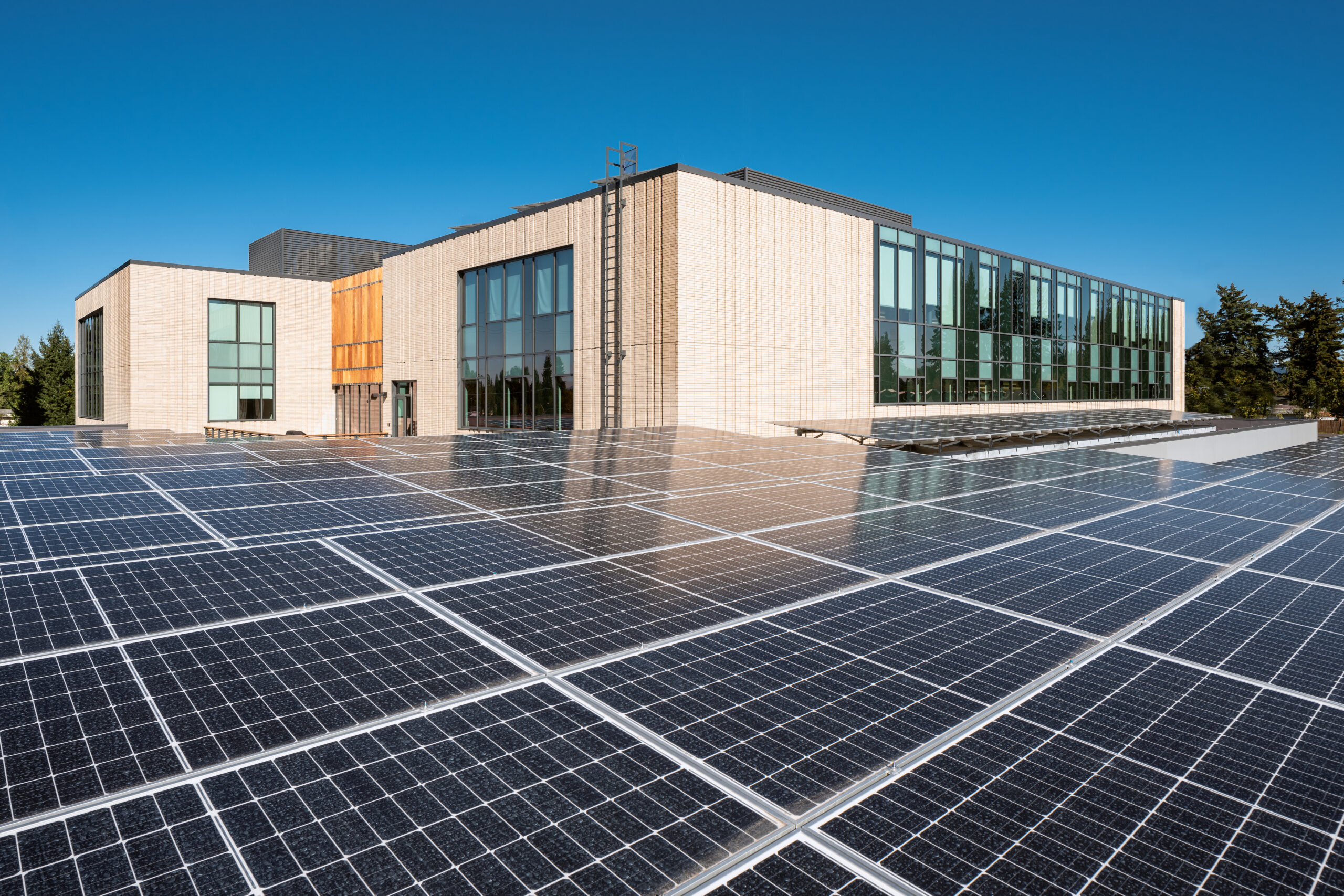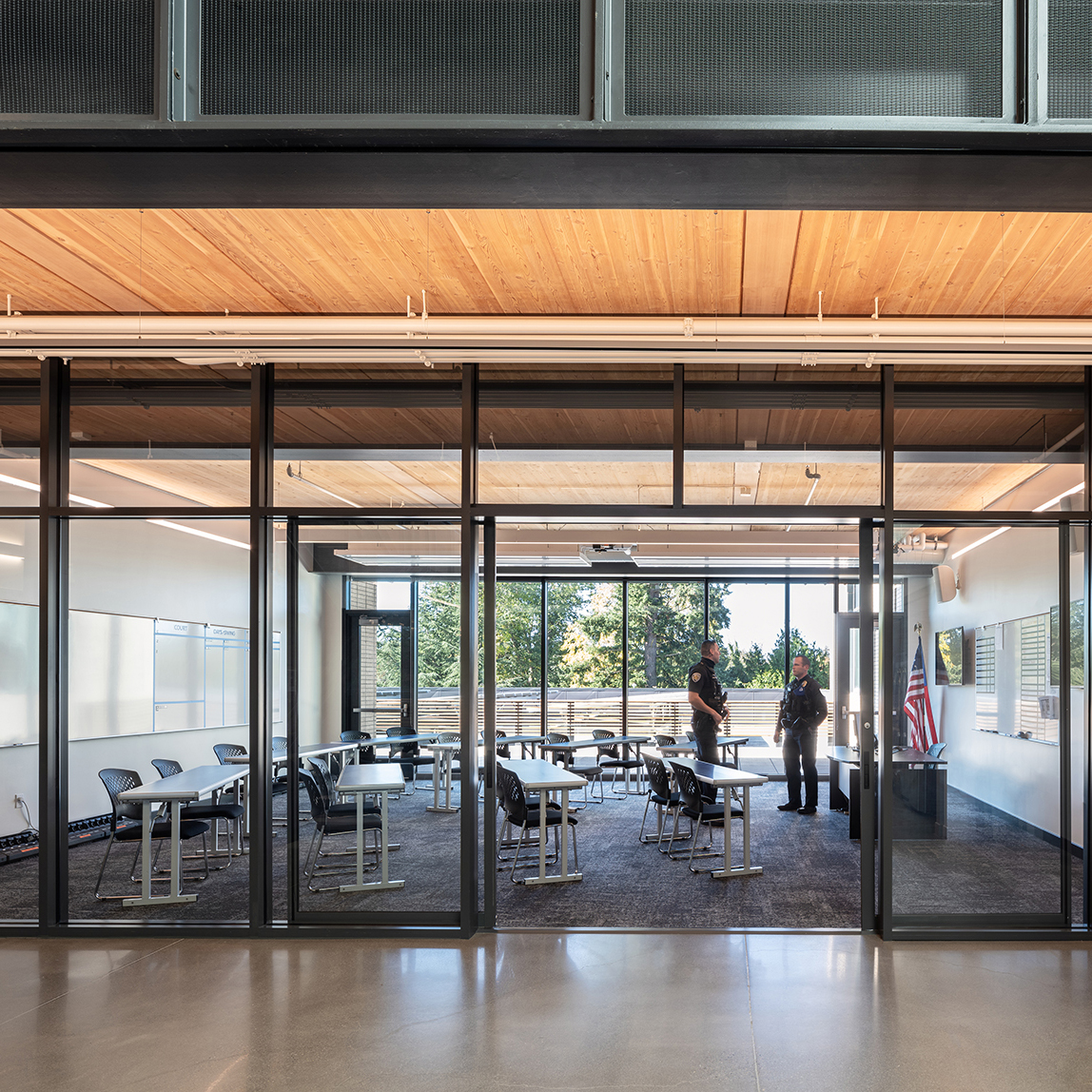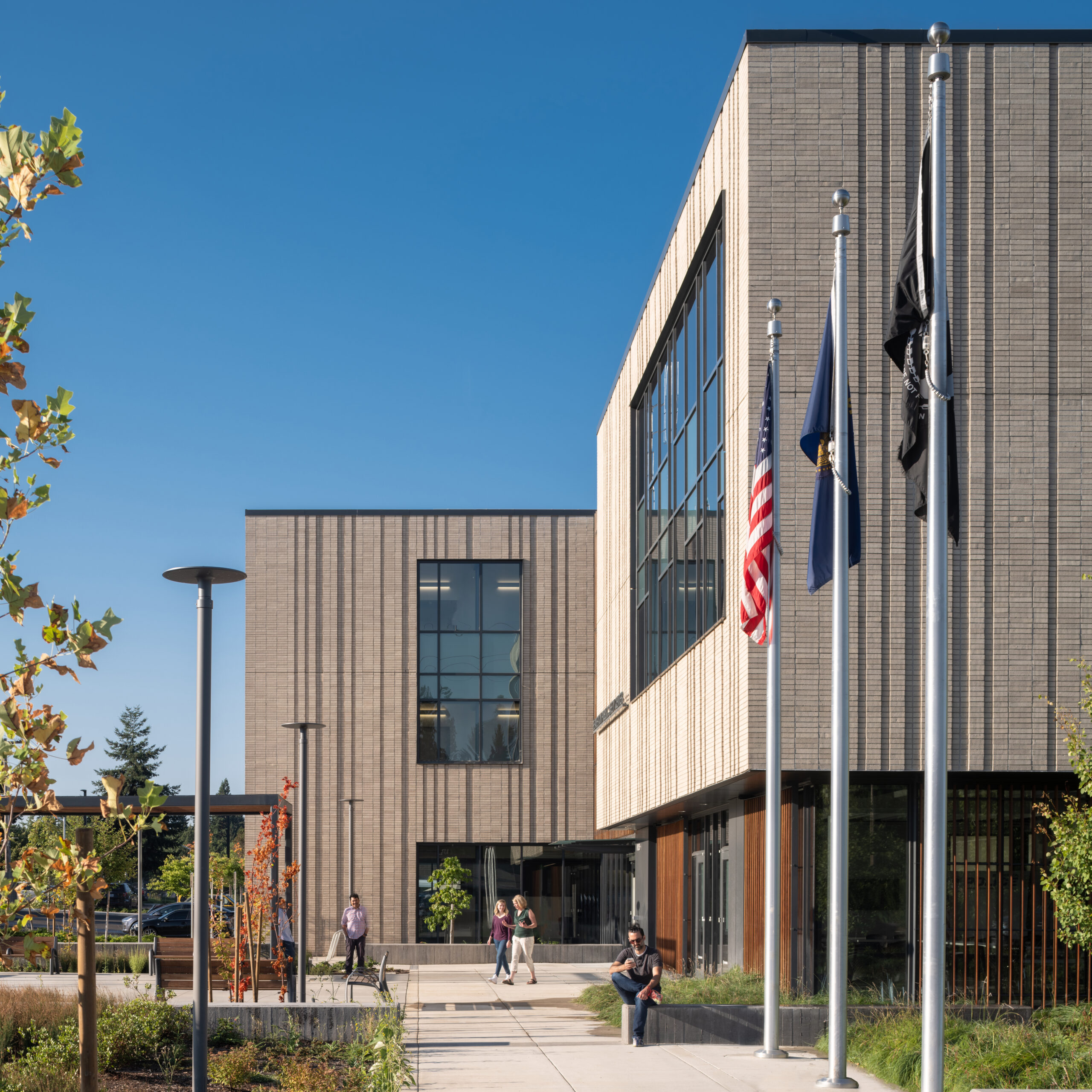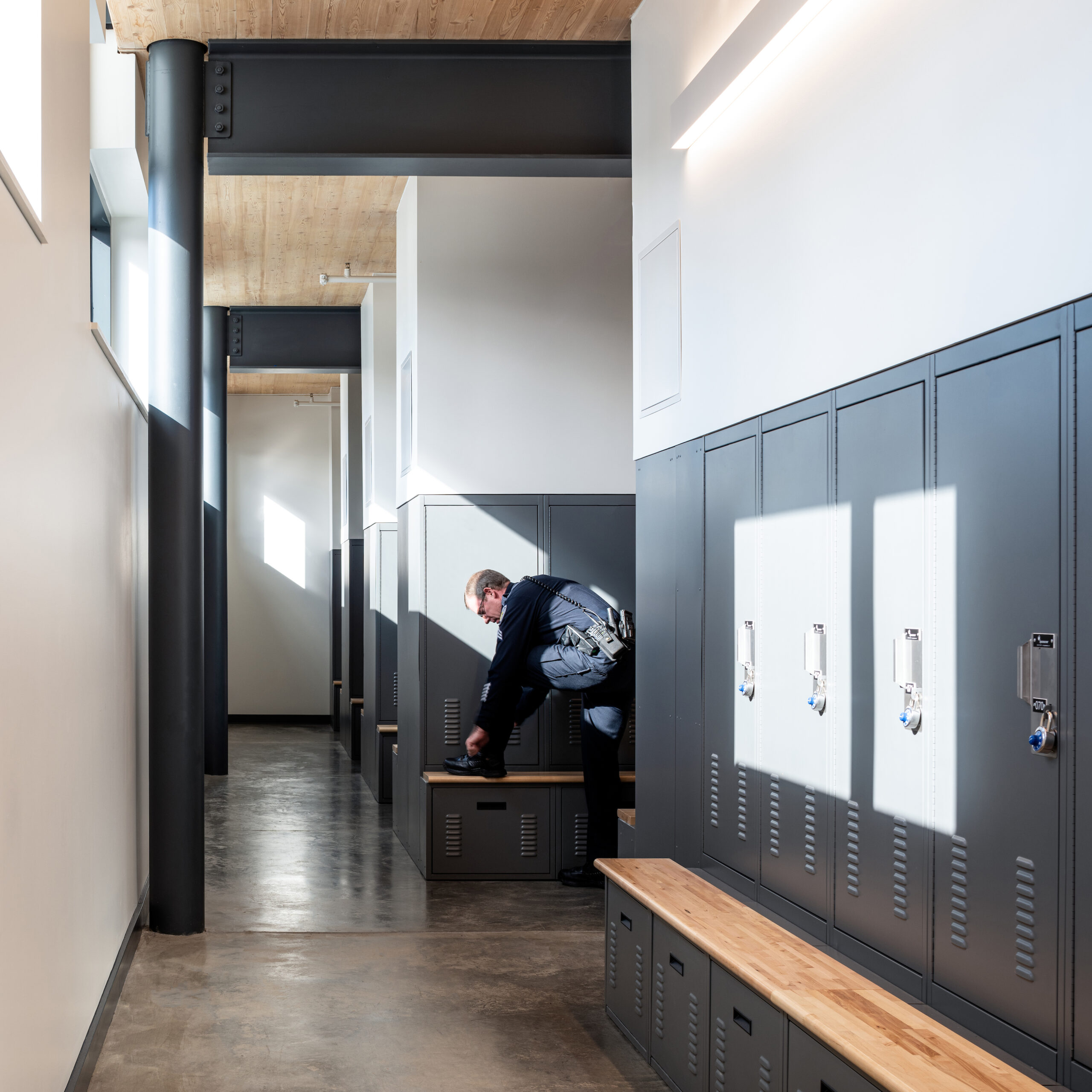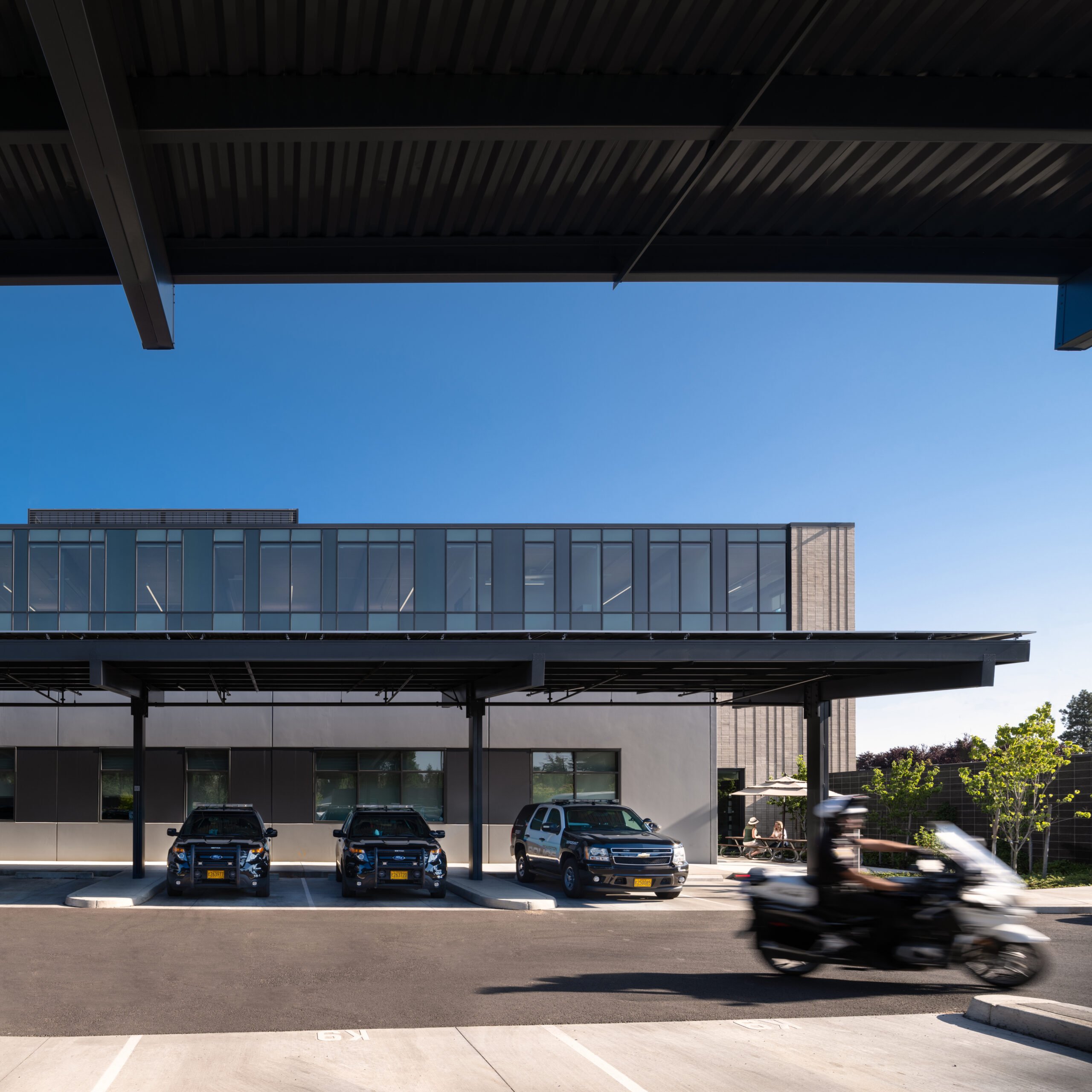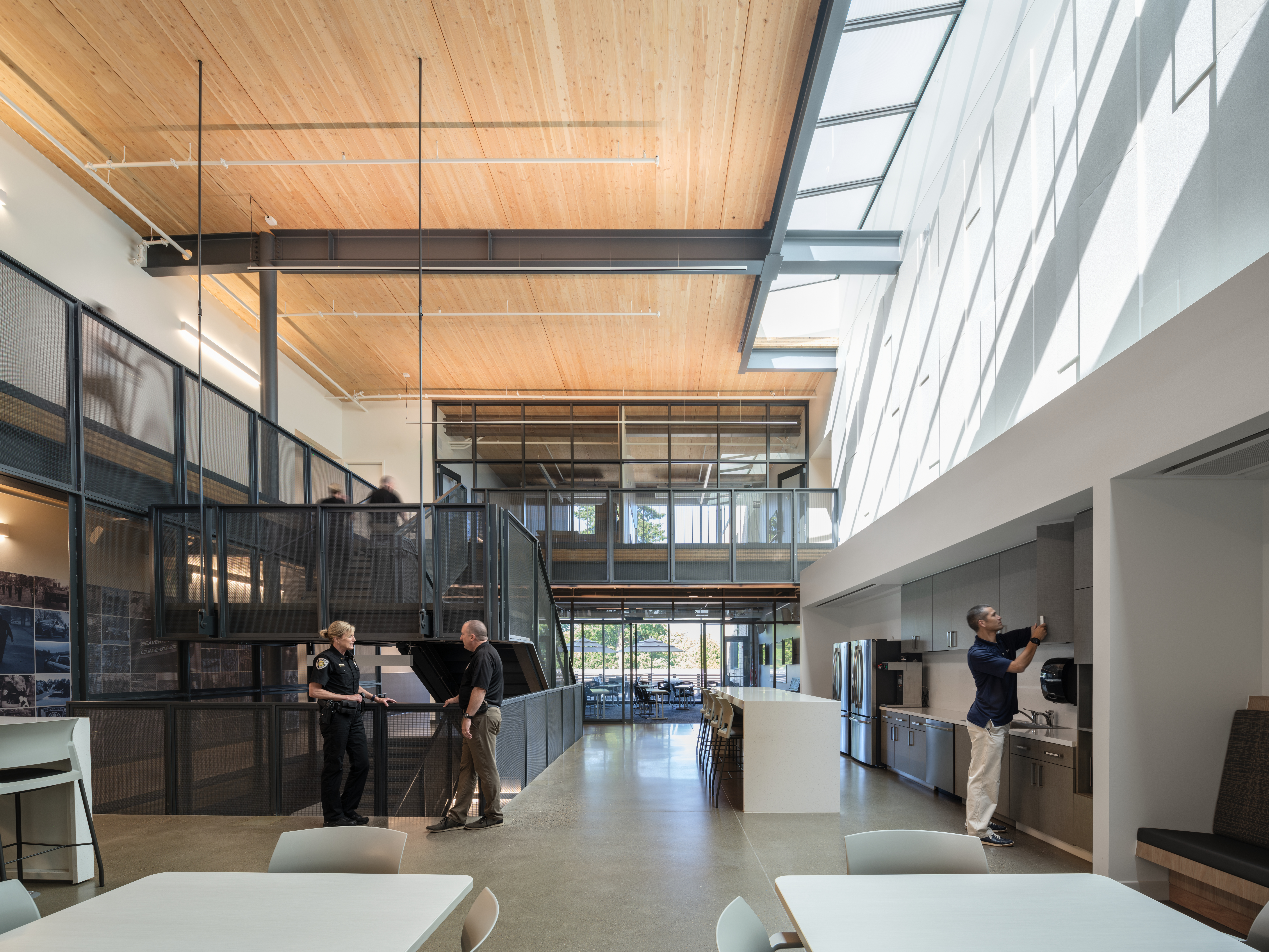In 2020 construction of the new Beaverton Public Safety Center was completed. Designed by FFA, the 72,000 sf facility houses the Beaverton Police Department as well as the Office of Emergency Management. The building’s site is a commercial corner that had been badly in need of significant redevelopment, and the state-of-the-art facility, with its large public plaza, was designed to be a catalyst for the surrounding neighborhood. Through visioning exercises with the City staff members and neighborhood leaders, the team identified key design concepts built around the Beaverton Police Department’s mission and the unique qualities of the neighborhood.
Inside the building, the team created a work environment that supports a closely-knit agency that builds its reputation on exemplary customer service in the realm of public safety organizations. The team developed the key communal spaces in a central two-story volume which is open to the work environment around it. With easy access to technical patrol functions below, this light-filled area becomes the central hub for the agency.
2020
72,000 sf
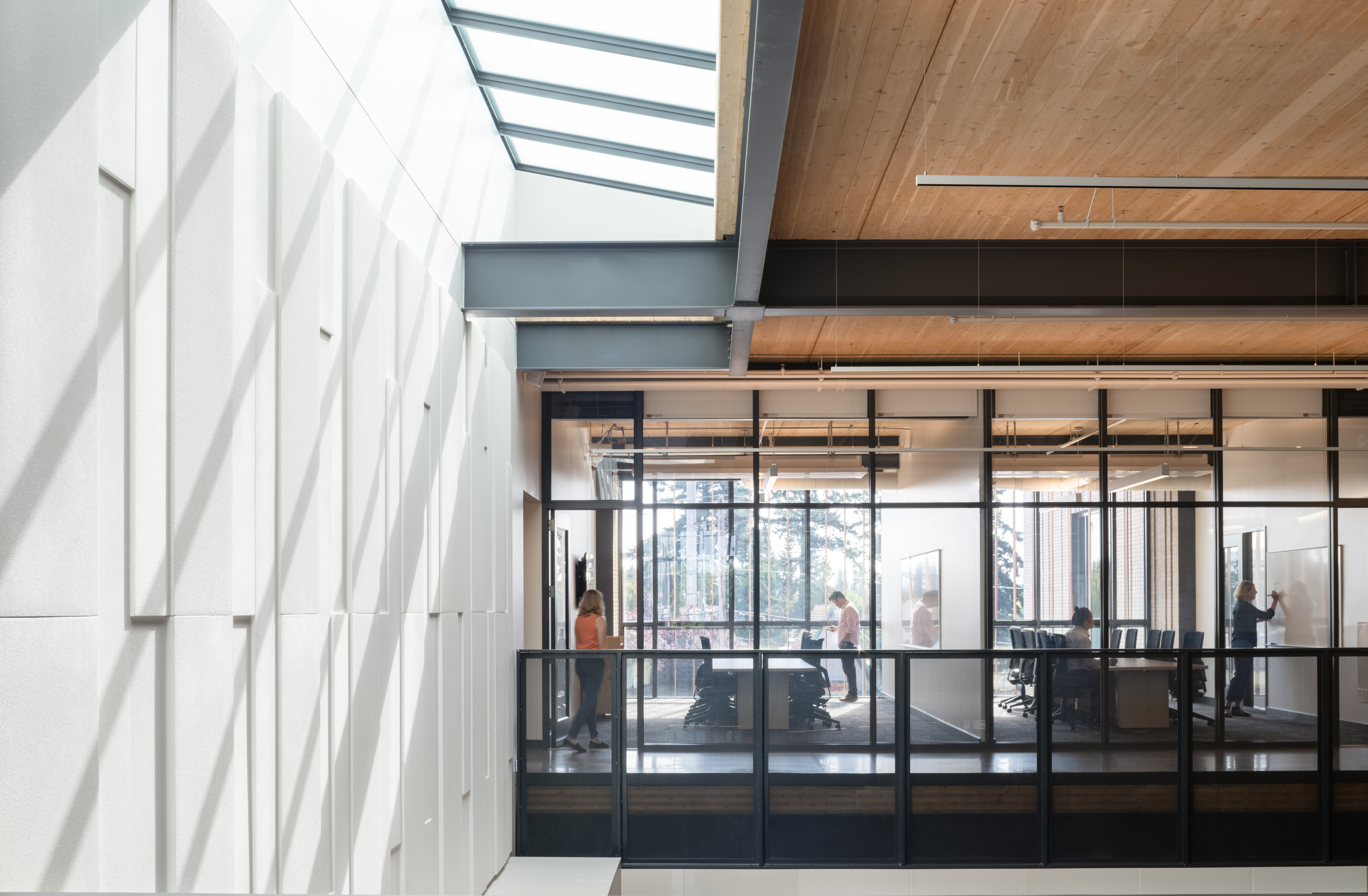
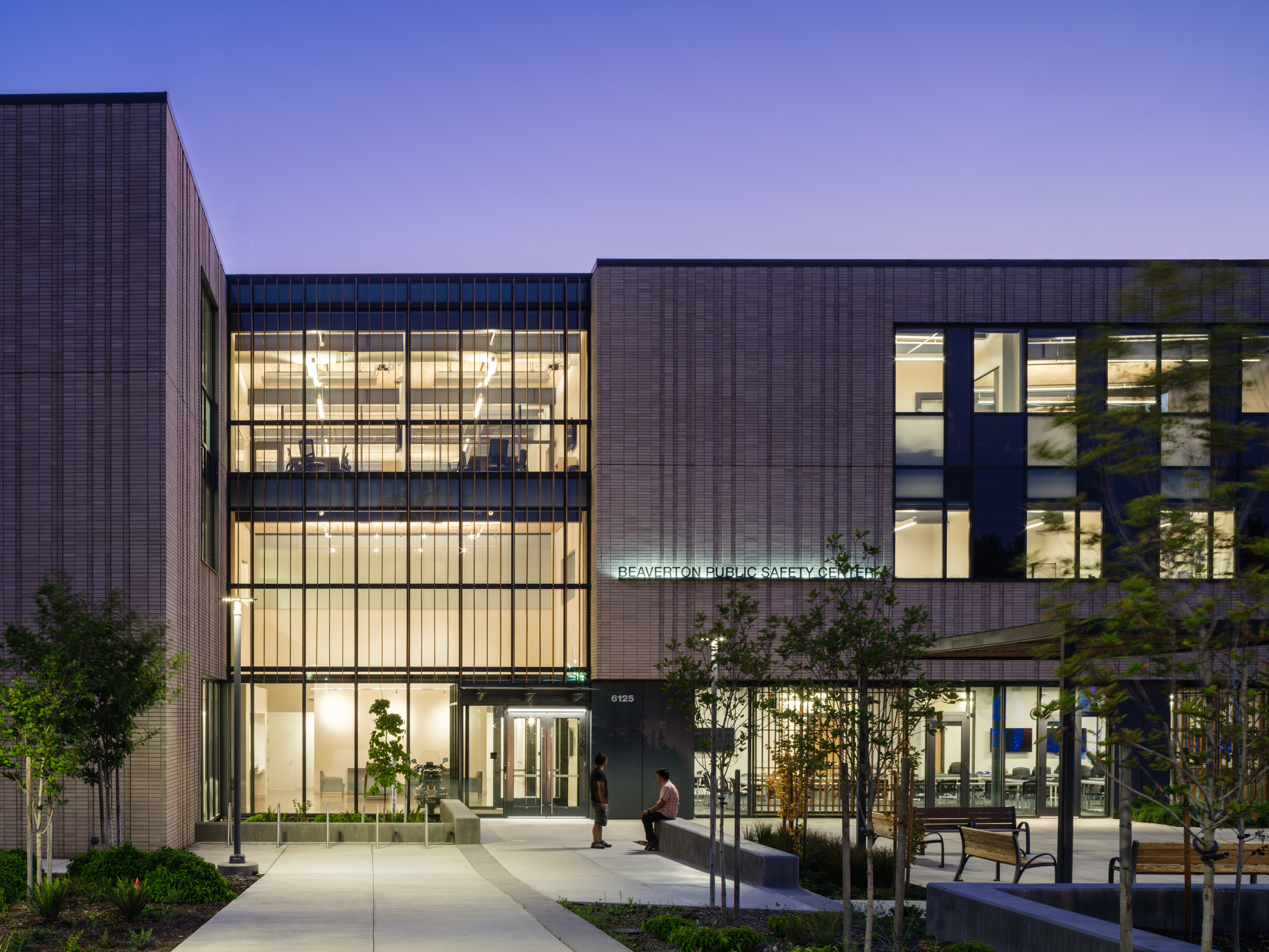


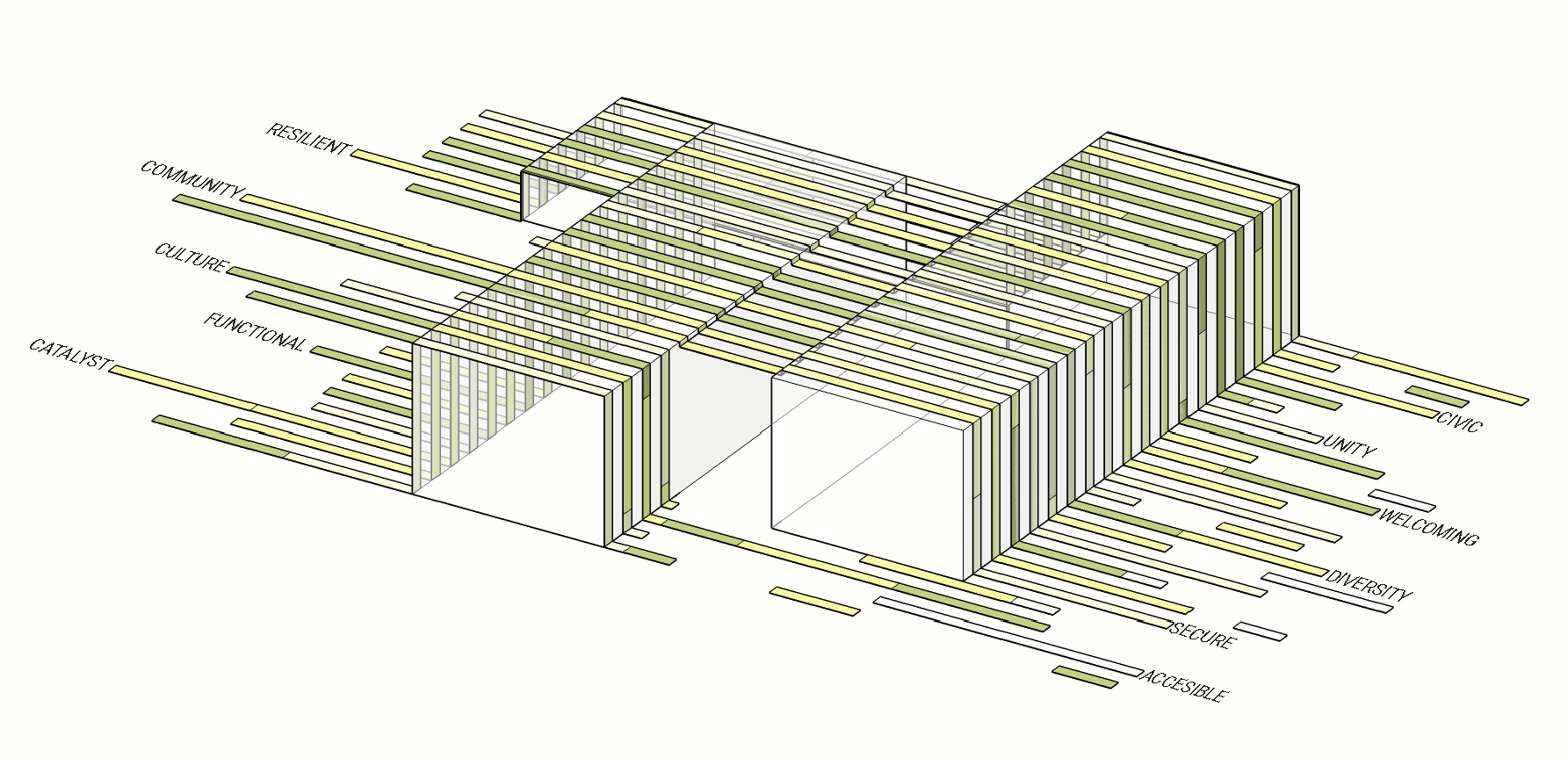
DESIGN CONCEPT: WEAVING
Beaverton is known for being an incredibly diverse community, with citizens from a variety of cultural backgrounds. The neighborhood around the new public safety center is often identified as the first landing place for new immigrants coming from foreign countries. The team used this diversity as a basis for a design concept of “weaving.” This concept is reflected in the programming and articulation of the site as well as the building through patterning and strategically spaced skylights.
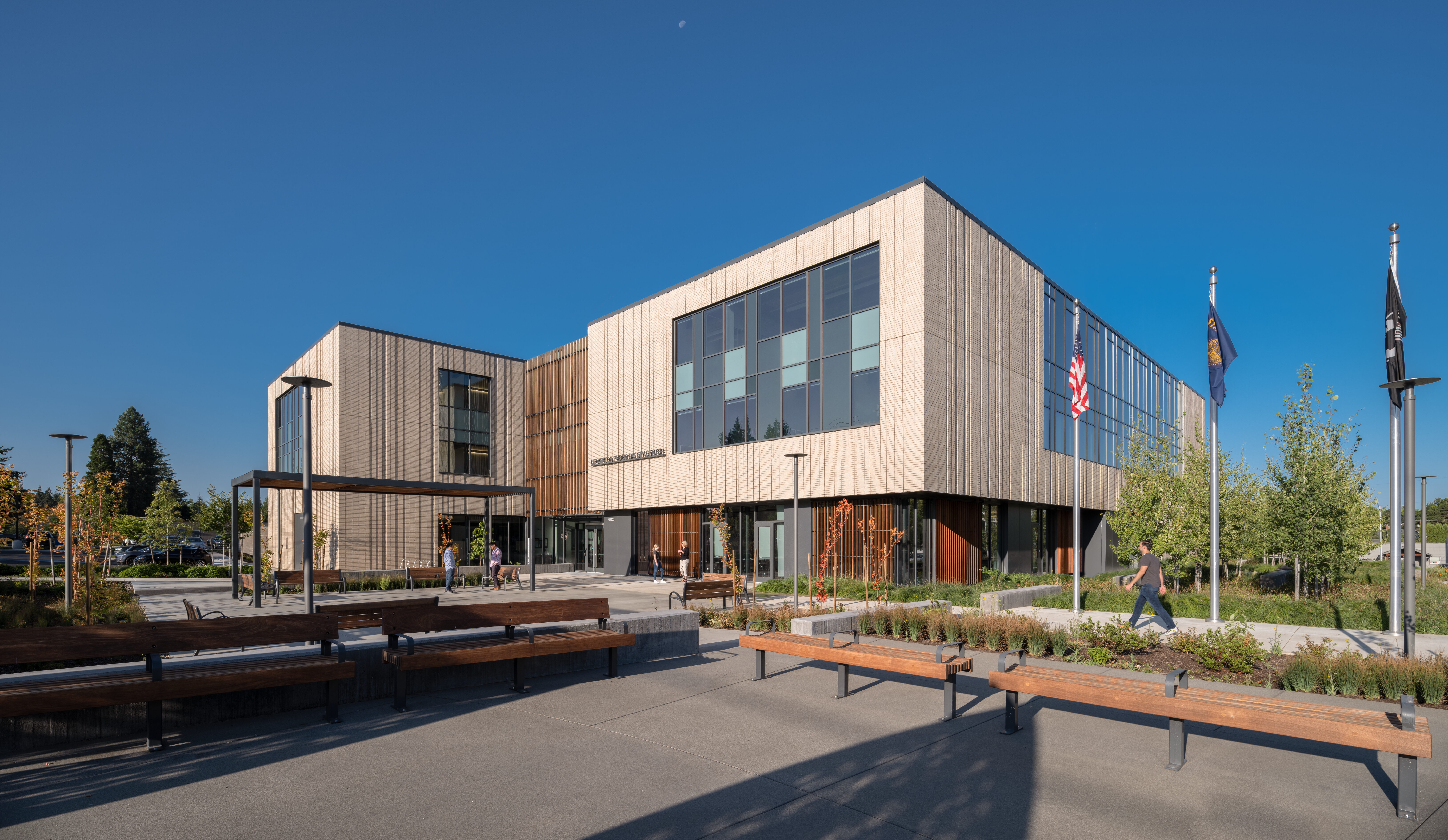
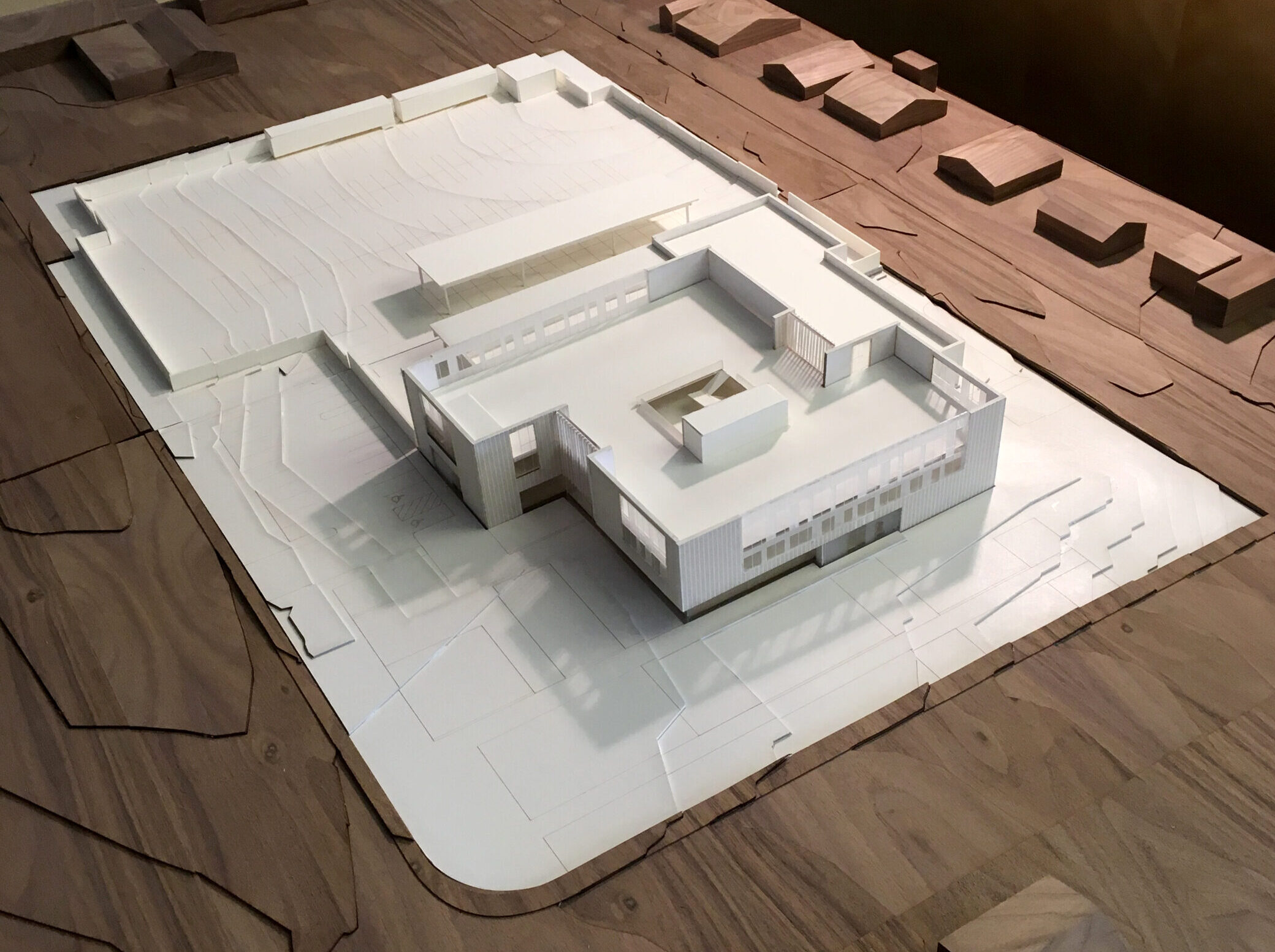


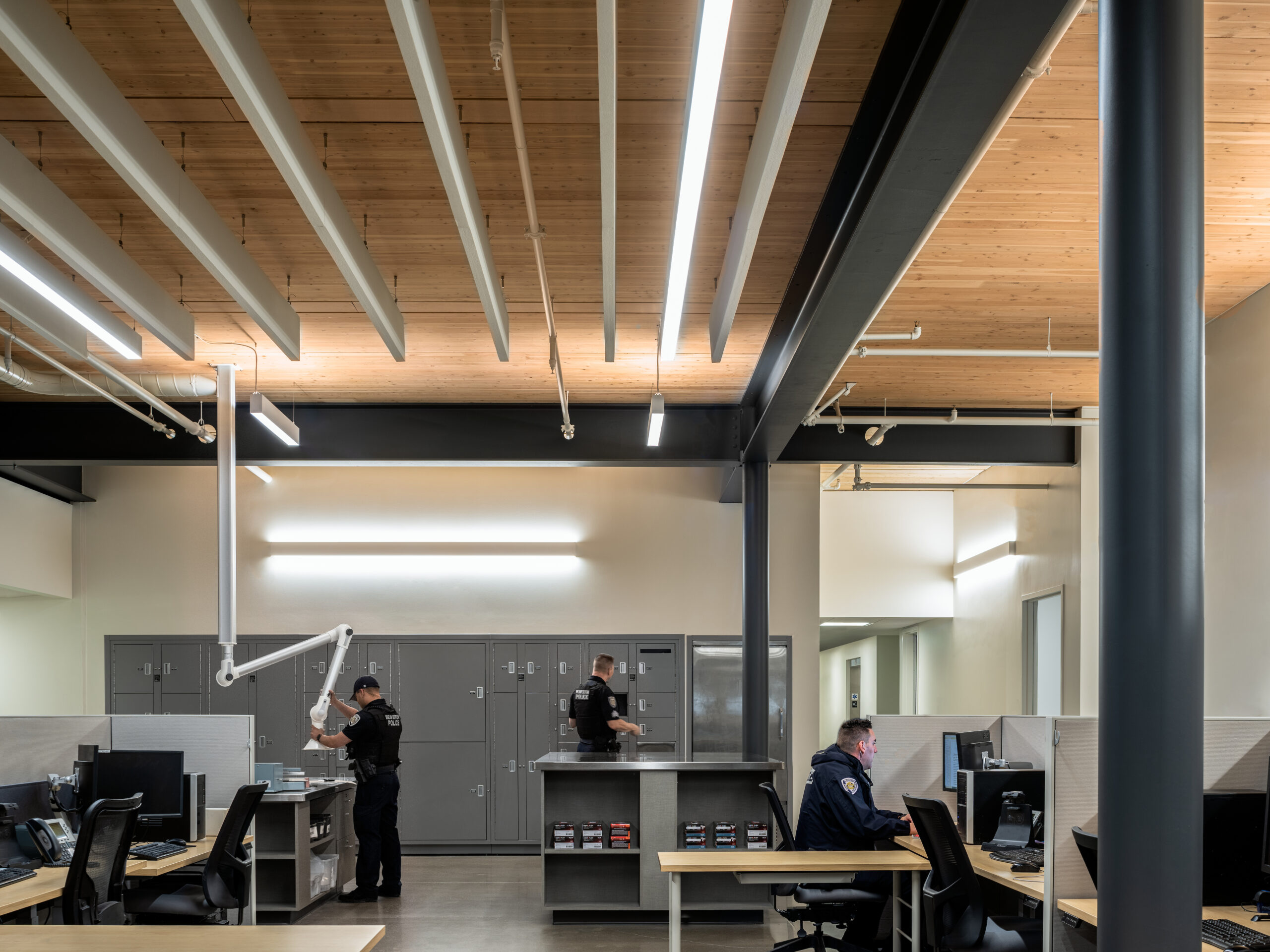
As an essential facility and the home to the Office of Emergency Management, facility resilience was a key design consideration. Working closely with engineering partner PAE, the design worked through multiple system scenarios exploring ways for the project to reduce energy loads while increasing power generation. The resulting building includes carefully considered load management, allowing areas of this 24-hour facility to turn off when not in use. The radiant heating and cooling system provides a high degree of comfort with low energy use. These load management strategies allowed for the team to downsize the emergency generation needs. With the emergency power generation, the team worked with the Office of Emergency Management to identify system risks including the reliability of fuel deliveries in the event of a significant seismic event. Composed of three parts, a diesel generator, a 300 KW photovoltaic panel installation, and a battery microgrid, the system leverages the photovoltaic panels and the microgrid to extend the life of the generator from days to weeks. The photovoltaic system provides day to day benefits from power generation. Coupled with the energy efficiency measures, the panels allow for an energy use index of 9 kBtu/sf/yr which is near NetZero Energy.
